
The University of St Andrews is a public university in St Andrews, Scotland. It is the oldest of the four ancient universities of Scotland and, following the universities of Oxford and Cambridge, the third-oldest university in the English-speaking world. St Andrews was founded in 1413 when the Avignon Antipope Benedict XIII issued a papal bull to a small founding group of Augustinian clergy. Along with the universities of Glasgow, Aberdeen, and Edinburgh, St Andrews was part of the Scottish Enlightenment during the 18th century.

St Andrews is a town on the east coast of Fife in Scotland, 10 miles southeast of Dundee and 30 miles northeast of Edinburgh. St Andrews had a recorded population of 16,800 as of 2011, making it Fife's fourth-largest settlement and 45th most populous settlement in Scotland.

The University of Dundee is a public research university based in Dundee, Scotland. It was founded as a university college in 1881 with a donation from the prominent Baxter family of textile manufacturers. The institution was, for most of its early existence, a constituent college of the University of St Andrews alongside United College and St Mary's College located in the town of St Andrews itself. Following significant expansion, the University of Dundee gained independent university status by royal charter in 1967 while retaining elements of its ancient heritage and governance structure.

The ancient universities of Scotland are medieval and renaissance universities that continue to exist in the present day. Together, the four universities are the oldest universities in continuous operation in the English-speaking world after the universities of Oxford and Cambridge. The majority of the ancient universities of the British Isles are located within Scotland, and have a number of distinctive features in common, being governed by a series of measures laid down in the Universities (Scotland) Acts 1858–1966. The Universities (Scotland) Act 1966 uses the term 'older universities' to refer to St Andrews, Glasgow, Aberdeen and Edinburgh. The four universities are generally regarded as the country's most selective, eminent and well-ranked universities.

King's College in Old Aberdeen, Scotland, the full title of which is The University and King's College of Aberdeen, is a formerly independent university founded in 1495 and now an integral part of the University of Aberdeen. Its historic buildings are the centrepiece of the University of Aberdeen's Old Aberdeen campus, often known as the King's or King's College campus.
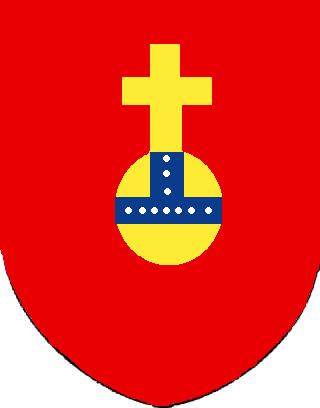
St Salvator's College was a college of the University of St Andrews in St Andrews, Scotland. Founded in 1450, it is the oldest of the university's colleges. In 1747 it merged with St Leonard's College to form United College.

St Leonard's College is a postgraduate institute at the University of St Andrews in St Andrews, Scotland. Founded in 1512 as an autonomous theological college of the University of St Andrews, it merged with St Salvator's College in 1747 to form the United College. In 1974 it was re-instituted as a postgraduate institute.
The University of St Andrews School of Medicine is the school of medicine at the University of St Andrews in St Andrews, Fife, Scotland and the oldest medical school in Scotland.
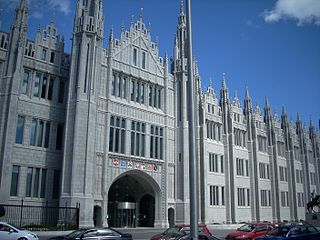
There are fifteen universities in Scotland and three other institutions of higher education that have the authority to award academic degrees.
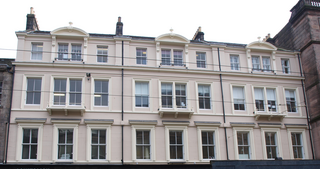
The Edinburgh Association for the University Education of Women (EAUEW), originally known as the Edinburgh Ladies' Educational Association (ELEA), campaigned for higher education for women from 1867 until 1892 when Scottish universities started to admit female students. For nearly a quarter of a century it arranged its own classes for women with lecturers from Edinburgh University, and it was connected with a wider campaign across Europe to open universities to women students.
A Lady Literate in Arts (LLA) qualification was offered by the University of St Andrews in Scotland for more than a decade before women were allowed to graduate in the same way as men, and it became popular as a kind of external degree for women who had studied through correspondence, or by attendance at non-university classes. Although awarded as a diploma, in terms of academic standard, it was equivalent to the Master of Arts.
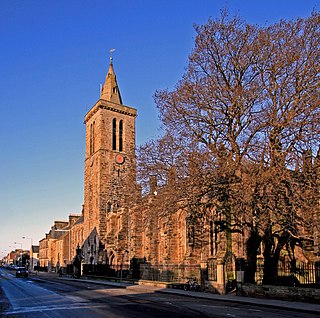
St Salvator's Chapel is one of two collegiate chapels belonging to the University of St Andrews, the other being St Leonard's Chapel, situated in the grounds of the adjacent St Leonard's School. The chapel was founded in 1450, by Bishop James Kennedy, built in the Late Gothic architectural style, and refurbished in the 1680s, 1860s and throughout the 20th century. It is currently the chapel of the United college as well as being the major university chapel.
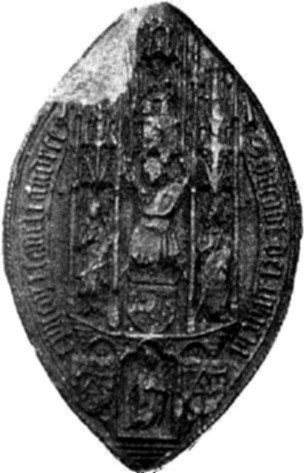
James Kennedy was a 15th-century Bishop of Dunkeld and Bishop of St. Andrews, who participated in the Council of Florence and was the last man to govern the diocese of St. Andrews purely as bishop. One of the Gaelic clan of Carrick he became an important figure in the government of the minority of King James III of Scotland as well as founder of St Salvator's College, St Andrews.

St Leonards School is a private boarding and day school for pupils aged 4–19 in St Andrews, Fife, Scotland. Founded in 1877 as St Andrews School for Girls Company, it adopted the St Leonards name upon moving to its current premises, the site formerly occupied by the University of St Andrews’ St Leonard's College, in 1883.

Dame Louisa Innes Lumsden was a Scottish pioneer of female education. Lumsden was one of the first five students Hitchen College, later Girton College, Cambridge in 1869 and one of the first three women to pass the Tripos exam in 1873. She returned as the first female resident and tutor to Girton in 1873.
St John's College of the University of St Andrews as a constituent college founded between 1418 and 1430 and was the precursor to present-day St Mary's College. The founder of the college was Lawrence of Lindores (1372-1437) under the chancellorship of Bishop Wardlaw.

St Salvator's Hall is a student hall of residence at the University of St Andrews. It lies close to the quadrangle of the United College, St Andrews and St Salvator's Chapel, a foundation which was endowed by King James II of Scotland. The Hall is in an area between North Street and The Scores. Architecturally, it has been described as a "rambling Gothic dormitory".
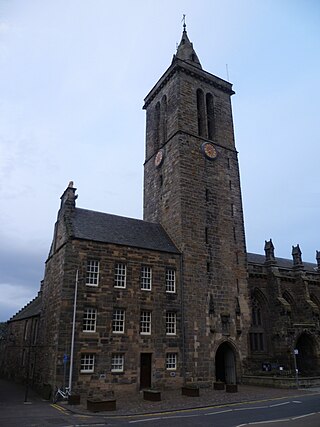
Education in Medieval Scotland includes all forms of education within the modern borders of Scotland, between the departure of the Romans from Britain in the fifth century, until the establishment of the Renaissance late fifteenth century and early sixteenth century. Few sources on Scottish education survived the Medieval era. In the early Middle Ages, Scotland was an oral society, with verbal rather than literary education. Though there are indications of a Gaelic education system similar to that of Ireland, few details are known. The establishment of Christianity from the sixth century brought Latin to Scotland as a scholarly and written language. Monasteries served as major repositories of knowledge and education, often running schools.

The history of universities in Scotland includes the development of all universities and university colleges in Scotland, between their foundation between the fifteenth century and the present day. Until the fifteenth century, those Scots who wished to attend university had to travel to England, or to the Continent. This situation was transformed by the founding of St John's College, St Andrews in 1418 by Henry Wardlaw, bishop of St. Andrews. St Salvator's College was added to St. Andrews in 1450. The other great bishoprics followed, with the University of Glasgow being founded in 1451 and King's College, Aberdeen in 1495. Initially, these institutions were designed for the training of clerics, but they would increasingly be used by laymen. International contacts helped integrate Scotland into a wider European scholarly world and would be one of the most important ways in which the new ideas of humanism were brought into Scottish intellectual life in the sixteenth century.















